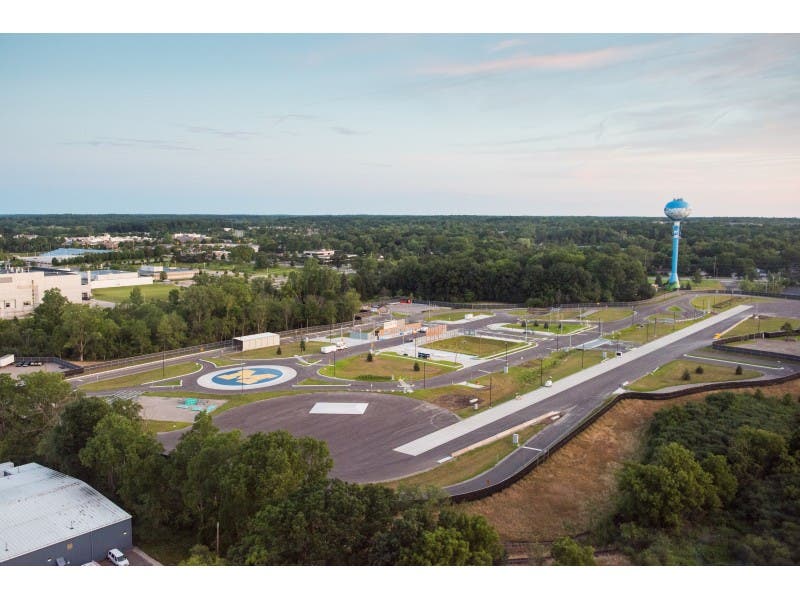Business & Tech
$10M Fake City Keeps Epicenter of Driverless Car Research in Michigan
Automakers and suppliers will test their technology at simulated track at test track at the University of Michigan.

Automakers and suppliers will be able to test new autonomous vehicle technologies at a 32-acre simulated city at the University of Michigan. (Photo and video via University of Michigan)
If you’re worrying about how it’s actually going to work when driverless cars become the norm and not some Jetsons-inspired fantasy – such as whether a fully autonomous vehicle will recognize a pedestrian in a crosswalk – take heart:
Find out what's happening in Hartlandwith free, real-time updates from Patch.
That and other questions are being answered at a new $10 million proving ground known as MCity, a collaboration of the Michigan Department of Transportation and the University of Michigan at Ann Arbor.
Michigan leaders say the 32-acre simulated urban and suburban environment is a linchpin that keeps automotive technology developments in Michigan amid threats from from Google, Tesla and Apple to shift the auto industry’s core to the Silicon Valley.
Find out what's happening in Hartlandwith free, real-time updates from Patch.
“I recently visited Google’s headquarters and I rode in one of their cars,” U.S. Sen. Gary Peters, D-Bloomfield Township, said at Monday’s official opening of MCity, The Detroit News reports.
“They’ve got nothing on us. This is the center of the (automated driving technology) universe. It is Michigan. It’s not California,” Peters said. “We are not going to let Silicon Valley take this technology, because this technology was born at the University of Michigan, born in the greater Detroit area, and we’re going to be the global leader of this technology that will transform mobility.”
Related:
Mcity includes a network of roads with intersections, traffic signs and signals, streetlights, building facades, sidewalks, tunnels, railroad crossings, paved and gravel roads and construction obstances. It is designed to support rigorous testing of new technologies before they are tried out on public streets and highways.
Mcity doesn’t simulate a perfect environment, though. For example, graffiti has been painted on some of the road signs, just as might happen in an actual setting, and some lane markings are faded.
The types of technologies that will be tested at the facility include connected technologies – vehicles talking to other vehicles or to the infrastructure, commonly known as V2V or V2I – and various levels of automation all the way up to fully autonomous, or driverless vehicles.
The goal is to put the first driverless car on the road in Ann Arbor by 2021
“There are many challenges ahead as automated vehicles are increasingly deployed on real roadways,” Peter Sweatman, director of the U-M Mobility Transformation Center, said in a statement. “Mcity is a safe, controlled, and realistic environment where we are going to figure out how the incredible potential of connected and automated vehicles can be realized quickly, efficiently and safely.”
Sweatman said driverless technology is a “game changer for safety, for efficiency, for energy, and for accessibility.”
“Our cities will be much better to live in, our suburbs will be much better to live in,” he said “These technologies truly open the door to 21st century mobility.”
Fifteen big-name players – from automakers Ford, General Motors, Toyota, Honda and Nissan to suppliers like Delphi Automotive to technology companies like Verizon and Xerox – have all invested $1 million over three years in simulated city. MDOT gave $3 million, and 33 other companies have committed $150,000 each over three years.
Toyota has a similar track in Japan, but one just minutes away from its tech center in Ann Arbor is “a nice playground for us” that should speed development of a prototype, said Hideki Hada, general manager of integrated vehicle systems department for the Toyota Technical Center.
“Here is a nice place to have a baseline understanding of the road signs, buildings so we can test improvement,” he said.
Get more local news delivered straight to your inbox. Sign up for free Patch newsletters and alerts.